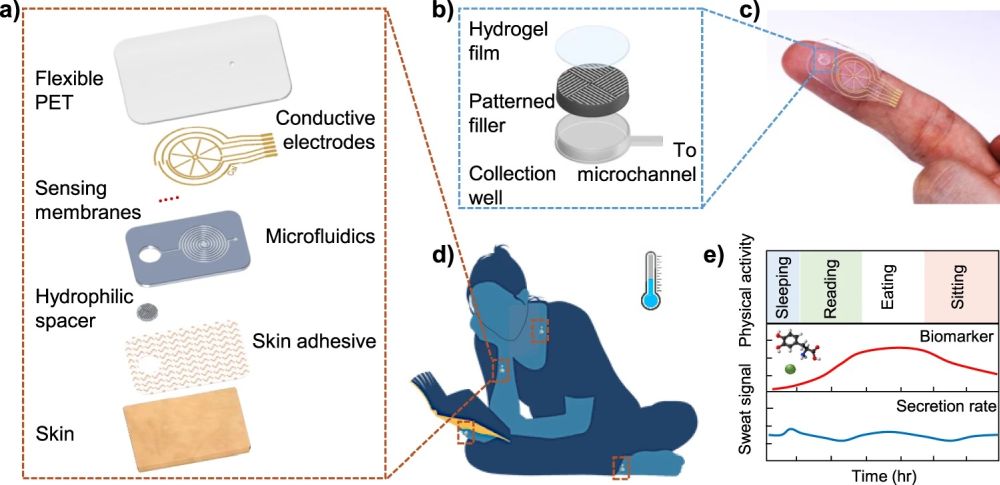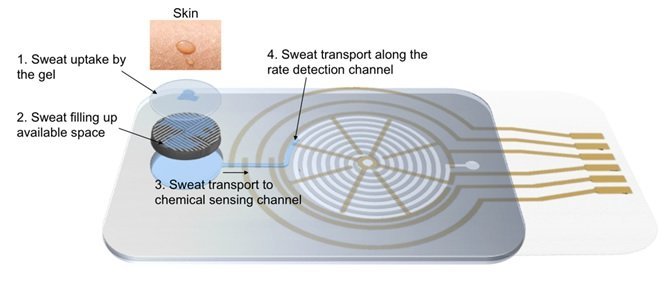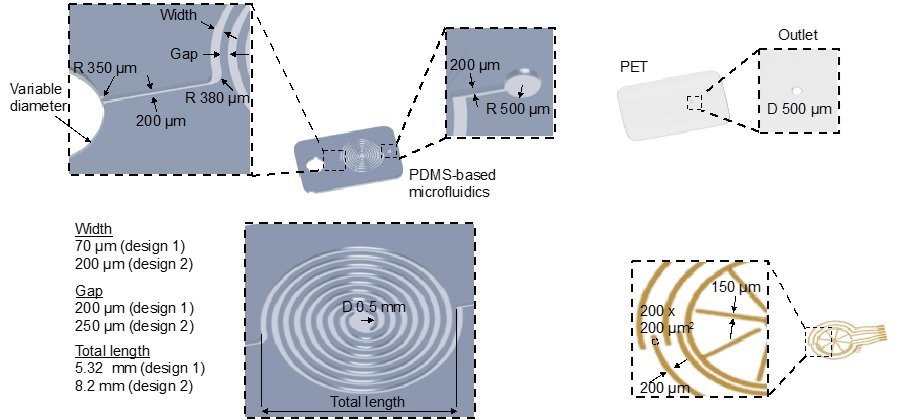
24 Mar Wearable microfluidic patch for continuous analysis of thermoregulatory sweat at rest
In addition to being an effective means of thermoregulation for the body, sweat can be a valuable source for non-invasive analysis of body physiology. The sweat rate, for example, can reflect health conditions such as nerve damage, metabolic disorders, etc. Despite its significance, several factors make it challenging to study sweat such as the low rate of secretion as well as evaporation. However, microfluidic chips, over the past few years have shown promising results in collecting and real-time analysis of sweat.
Here, a research team from the University of California, Berkeley, has demonstrated a microfluidic patch capable of dynamic sweat analysis related to routine activities, stress events, hypoglycemia-induced sweating, and Parkinson’s disease.
“In this work, we present a wearable patch for continuous measurement of at-rest thermoregulatory sweat composition and rate, overcoming evaporation by entrapment of sweat within a microfluidic sensing channel. Rapid uptake at low secretion rates is achieved via incorporation of a hydrophilic filler in the sweat collection well to reduce the volume of sweat that must be accumulated before it is pushed into the channel for measurement.”, the authors elaborated.

Reproduced under Creative Commons Attribution 4.0 International License. Nyein et al., Nat. Commun., 2021.
The microfluidic patch for collecting and analysis of the sweat is composed of three layers; a laminated hydrophilic filler that sits on a patterned surface in the collection and contacts the skin for sweat uptake. The PDMS-based microfluidic layer which contains the collection well transfers the sweat to the outlet through spiral microchannels. The microfluidic channels are aligned with a sensing layer where electrochemical sensing methods were incorporated for impedance-based sweat rate measurements. The microfluidic device proposed here takes advantage of the sweat gland secretory pressure to introduce the sweat to the microchannels. Therefore, care was taken to minimize the hydraulic pressure loss in the PDMS microchannels to ensure that the pressure is high enough to push the sweat into the microfluidic device.

Reproduced under Creative Commons Attribution 4.0 International License. Nyein et al., Nat. Commun., 2021.
The microfluidic patch was shown to be capable of the rapid uptake of nL min-1cm-2 rates of sweat and near real-time analysis of the sweat composition and rate at rest.
“The presented patch can be used to more quantitatively study this phenomenon by simultaneously accumulating data on resting sweating rates and blood glucose levels, both for an individual over time and across a population of subjects. Personalized and universal correlations could then be built that enable resting sweat rate to serve as a noninvasive predictor of hypoglycemia.”, the authors concluded.
Read the original article: A wearable patch for continuous analysis of thermoregulatory sweat at rest

Pouriya Bayat
Pouriya is a microfluidic production engineer at uFluidix. He received his B.Sc. and M.A.Sc. both in Mechanical Engineering from Isfahan University of Technology and York University, respectively. During his master's studies, he had the chance to learn the foundations of microfluidic technology at ACUTE Lab where he focused on designing microfluidic platforms for cell washing and isolation. Upon graduation, he joined uFluidix to even further enjoy designing, manufacturing, and experimenting with microfluidic chips. In his free time, you might find him reading a psychology/philosophy/fantasy book while refilling his coffee every half an hour. Is there a must-read book in your mind, do not hesitate to hit him up with your to-read list.


